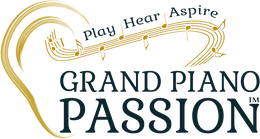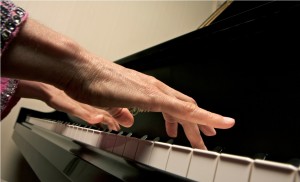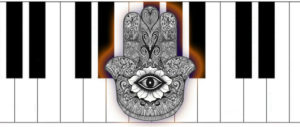For several years after I reclaimed my passion for the piano, I struggled with the concept of tempo rubato.
My first adult piano teacher explained I should think about tempo rubato as push and pull. “You stretch the music in some places, then speed it up in others, to give it added interest.”
While he spoke, I tapped my foot on the floor next to the damper pedal. I worried that I wouldn’t have the judgement to know which parts to push and which to pull. Was I supposed to make it up?
I needed several years of practice to become comfortable with the concept. Recently, I came across this gem in A Poetry Handbook, which at the time of my struggle with tempo rubato would have been illuminating:
“Rhythm is one of the most powerful of pleasures, and when we feel a pleasurable rhythm we hope it will continue. When it does, the sweet grows sweeter. When it becomes reliable, we are in a kind of body-heaven.”
The sweet grows sweeter—so beautifully said by the American poet Mary Oliver. Rhythm, whether created from a pattern of beats in words or music, taps into a primal center of pleasure in the listener.
Mary Oliver cautions: “Change the line length or rhythm arbitrarily, or casually, and you have puzzled and sensually irritated the reader—thrown him from his trance of interest and pleasure.” And yet, alter “the line length or the established rhythm when you want to, or need to, or choose to, to change the very physiological mood of the reader.”
Or the listener, as in our case.
As pianists, we make subtle changes in the rhythm of a piece of classical piano music, lingering over one phrase, imbuing another with urgency, ultimately because we have an abiding need to communicate to our listeners the feelings that the music evokes within.
Learning how to use tempo rubato comes from a free sense of experimentation on the bench during practice time. In order to experiment, of course we need to know the notes and the melodic, bass, and inner voices. Yet more is required: tapping into the feelings that the music strikes within us: the luxuriant opening melody signifying longing, for example, or the switch to a minor key a creating patina of sadness, or a burst of four-note bass chords a spray of energy. Only then will the creative unconscious supply ideas of when to contract the tempo and when to expand it.
As part of the experimentation, we must listen, truly listen, to our resulting playing. Then may we gauge whether we have communicated our feelings about the music through tiny pauses and accelerations in the tempo. The music becomes like two mockingbirds, “in the green field/…spinning and tossing/the white ribbons/of their songs,” from one of my favorite Mary Oliver poems, “Mockingbirds”.
I’ll leave you now with the ending to “Mockingbirds.” Listen for Mary Oliver’s use of tempo rubato in the last two lines, her simple, truncated declarations that seem to close the poem with a prayer:






Do you know of any software or apps that help musicians practice rubato? What a help that would be!
Hi Ethan, thanks for reading. Unfortunately we do not know of any. Maybe someone will come up with one!